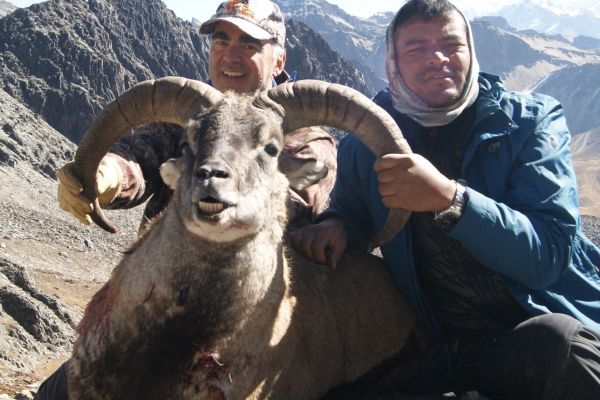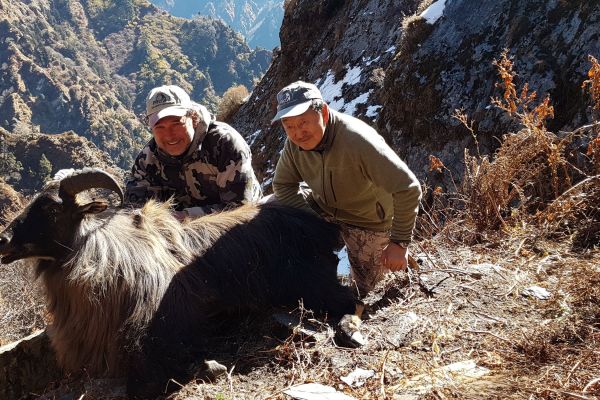Nepal Hunting, Dhorpatan Hunting Reserve is adjoins of Baglung, Rukum and Myagdi District in the Dhaulagiri Himalayan in the western part of Nepal. Putha, Churen, and Gurja Himal extended over the northern boundary of the Hunting Reserve. The hunting reserve was established in 1983 and was gazette in 1987. The Objectives of the reserve allow sports Trophy Hunting and preserve a representative high altitude ecosystem in the western region of Nepal. Nepal Safaris hunting such as blue sheep hunting and Himalayan Tahr Hunting with Combo Hunting is Nepal no1 hunting species among the hunters and outfittrs through the world.
The Reserve extended over an area of 1325 sq.km. and it an only one hunting reserve in the country to meet the need of Nepalese and trophy Hunters of Blue sheep and Himalayan Tahr with other animals. The Dhorpatan Hunting Reserve elevation remains snow-capped mountain through the year. Altitudes vary from 3000 m to more than 7000 m. The flat meadows above tree lie 4000 m locally known as bookies or Patan is important for Blue Sheep and other herbivorous animals and lower than 4000 m we hunt Himalayan Tahr and other species. The Hunting Reserve is divided into 7 blocks for hunting management purposes. The Hunting reserve is surrounded by the village on all sides except the north. The Local people depend on the reserve to meet their requirements of timber, fuelwood, fodder with pasture. The majority of people belong to the Mongoloid race, including Magar, Thakali, Gurung and different ethnic groups have resulted in a mixed pattern of cultures.
Vegetation
The reserve is characterized by alpine, sub-alpine and high temperate vegetation. Common plant species include fir, pine, birch, rhododendron, hemlock, oak, juniper, and spruce. Pasturelands occupy more than 50% of the total area of the reserve at a higher elevation.
Wildlife
The reserve is one of the prime habitats for blue sheep, a highly coveted trophy. Status survey on blue sheep conducted by the Department of National Park revealed that the reserve has over 1300 blue sheep. Other animals found are leopard, goral, serow, Himalayan tahr, Himalayan black bear, barking deer, wild boar, rhesus macaque, langur, and mouse hare. The reserve is home to 137 species of birds. Pheasants and partridge are common and their viable population in the reserve permits controlled hunting.
Endangered Animals in the reserve include Musk deer, Wolf, Red panda, Cheer pheasant, and Danphe.
The hunting license is issued by the Department of National Parks and Wildlife Conservation.
Climate
The monsoon lasts until the beginning of October. Day time temperature is very low during winter due to strong winds. Higher elevation remains covered with cloud in the morning, later clouds are cleared by the wind. Snow may occur even at low elevation until early April, however, it soon melts. The best time to visit the reserve is March-April
How to get there
Public bus service is available from Kathmandu to Burtibamg via Baglung Bazaar and another route via Tansen-Tamgash Gulmi also. Similarly, visitors can reach by foot from Beni, Myagdi to Dhorpatan within 3 days normal walk.
Chartered service helicopters may be available on request from Kathmandu and Pokhara.




